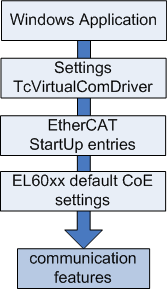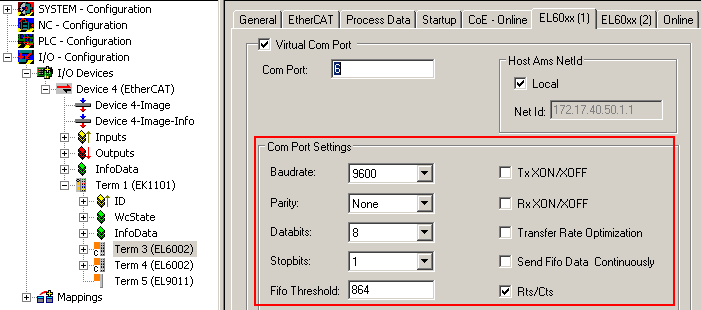Hints regarding TcVirtualComDriver
In case the EL60xx is to cooperate with the TwinCAT Virtual Serial COM Driver, here are a few hints:
Usually the customer-specific higher-level Windows application sets the desired feature of the COM interface according to the application, e. g. 2400 baud and 7N2 coding. Therefore, the customer-specific entries made before parameterization in the CoE StartUp entries, the Settings dialogue, the VirtualComPort or the device CoE are usually irrelevant.
 Fig.144: Each higher level (if available or activated) dictates the communication features to the level below it.
Fig.144: Each higher level (if available or activated) dictates the communication features to the level below it. Notice | |
TcVirtualComDriver version Check whether the desired Baud rate/coding combination of the TcVirtualComDriver version and EL/EP terminal used by you is also supported. If this is not the case: |
If the COM application has then set the features (such as baud rate) during the runtime, the correct setting can be checked against it in the Online CoE, see fig.
 Fig.145: Checking the settings desired by the COM application in the CoE
Fig.145: Checking the settings desired by the COM application in the CoE  Fig.146: Default startup entries of a EL6002 (example) – only the default entries (in this case 0x1C12 and 0x1C13) are required
Fig.146: Default startup entries of a EL6002 (example) – only the default entries (in this case 0x1C12 and 0x1C13) are required Fig.147: VirtualComDriver Settings (example)
Fig.147: VirtualComDriver Settings (example)The settings are relevant only if no specification of the COM features is made or can be made from the application. The COM port is opened with these default settings.
Exception: TransferRateOptimization, SendFifoDataContinously and FiFoThreshold are to be set only from TwinCAT.